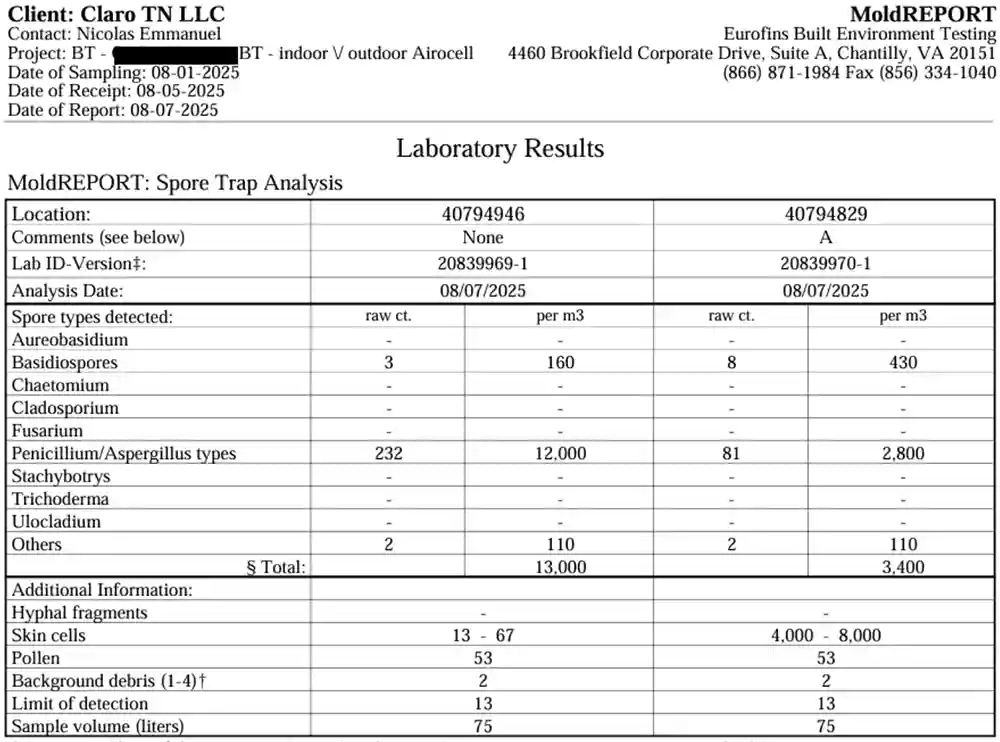Case Study: Basement waterproofing revealed hidden mold contamination
A Nashville homeowner had spent the previous year renovating their upstairs and was feeling good about the improvements. But when they decided to tackle the basement—enclosing it for waterproofing in July—they started noticing symptoms they hadn't experienced before.
The family requested mold testing to understand what might be causing their discomfort. They suspected the basement work might have disturbed something, but they weren't prepared for what the testing would reveal.

Claro conducted air quality testing in multiple areas of the home, including the newly enclosed basement and an upstairs bedroom. The results showed significant contamination in both locations.
The basement registered 13,000 spores per cubic meter—dominated by Penicillium/Aspergillus at 12,000 spores. The bedroom wasn't much better, showing 3,400 spores per cubic meter with Penicillium/Aspergillus at 2,800 and Basidiospores at 430.
The waterproofing work had likely trapped existing moisture and mold contamination inside the newly enclosed space. Rather than solving the problem, the renovation had sealed it in—and the spores were spreading throughout the home via the HVAC system and natural air circulation.

In August, Claro performed a whole-home dry fog treatment to address the contamination at its source and throughout the property. The EPA-certified process reached into the basement, upstairs rooms, and every hidden space where spores had traveled.
Post-treatment testing confirmed dramatic results: total culturable fungi dropped to just 1,800 CFU/m³, with Aspergillus fumigatus at 1,800 and trace Penicillium at 27. The dangerous Penicillium/Aspergillus contamination that had dominated the pre-treatment tests was now eliminated.
This case demonstrates an important lesson: renovation work in moisture-prone areas can disturb existing mold or trap it inside new construction. Testing before and after major basement work isn't just smart—it can prevent a hidden problem from becoming a whole-home health issue.

